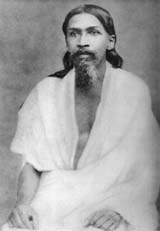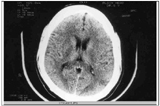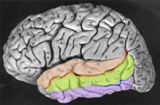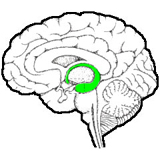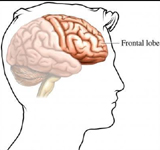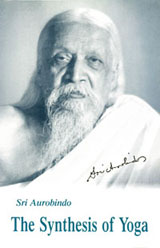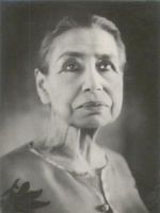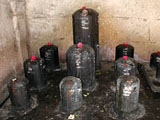Yoga
Similarities between neurological and yogic models of human memory
Abstract
Neuroscientists have identified various types of human memory based on differences in cortical processing. Different terminologies like citta have been described in ancient Indian Yoga Psychology to differentiate between various types of memory. In recent times, Sri Aurobindo has classified human memory into three types. In this article, we will explore to determine if there is any correspondence between all these various classifications of human memory.Introduction
Neuroscience states that memory is held in various parts of the brain while Yoga Psychology views the mental substance as pervasive within the body, with memory an inherent part of this mind-stuff. The neurological view of memory is derived from the fact that it lumps consciousness and mind together into one entity, which is treated as being separate from the physical body. By contrast, the yogic model separates consciousness, the mind and the brain. It states that consciousness is the substratum whose differentiations create mind, vital (prāna or life-force) and matter, and that the mind is not limited to the brain but forms a subtle/occult sheath of its own. The brain is merely a center for organization and ideation as well as communication with the senses. We will ignore this dissonance on the location of memory and focus on finding similarities between the memory taxonomy which has been postulated by both sides.
First we will present the neurological view of memory, then the yogic view of memory and then explore to determine if there is any probable correspondence.
Neurological view of memory
The neurological classification of memory is derived from functional imaging experiments as well as lesion studies, in which study of dysfunction offers insights into normal function (1). Neurological experiments have identified the following types of memory:
• Sensory memory
• Short-term memory
• Long-term memory which has two further sub-types :
(i) Explicit/declarative memory
(ii) Implicit/non-declarative memory.
Sensory memory
This refers to the ability of the five senses to retain information of impacts. It is the ability to retain impressions of sensory information after the original stimulus has ceased. It refers to items detected by the sensory receptors which are retained temporarily in the sensory registers. The two types of sensory memory that have been most explored are iconic memory and echoic memory (2).
Short-term / working memory
It refers to the memory which we hold in our mind while performing some task. There is a distinction between working memory and short-term memory. The latter is a theory-specific construct which lasts a few seconds while the former is a generic term. I will use the former because I am unclear if short-term memory can correspond to anything in the yogic memory model, given its relatively short duration.
Long-term memory
This refers to the memory which can last for a few days to a few decades. This is further classified into explicit and implicit memory. The distinction between explicit and implicit memory was uncovered due to lesions on the bilateral limbic association areas of the temporal lobe (3). The figure below, derived from The Hippocampus Book by Andersen et al (4), presents a taxonomy of long-term memory:
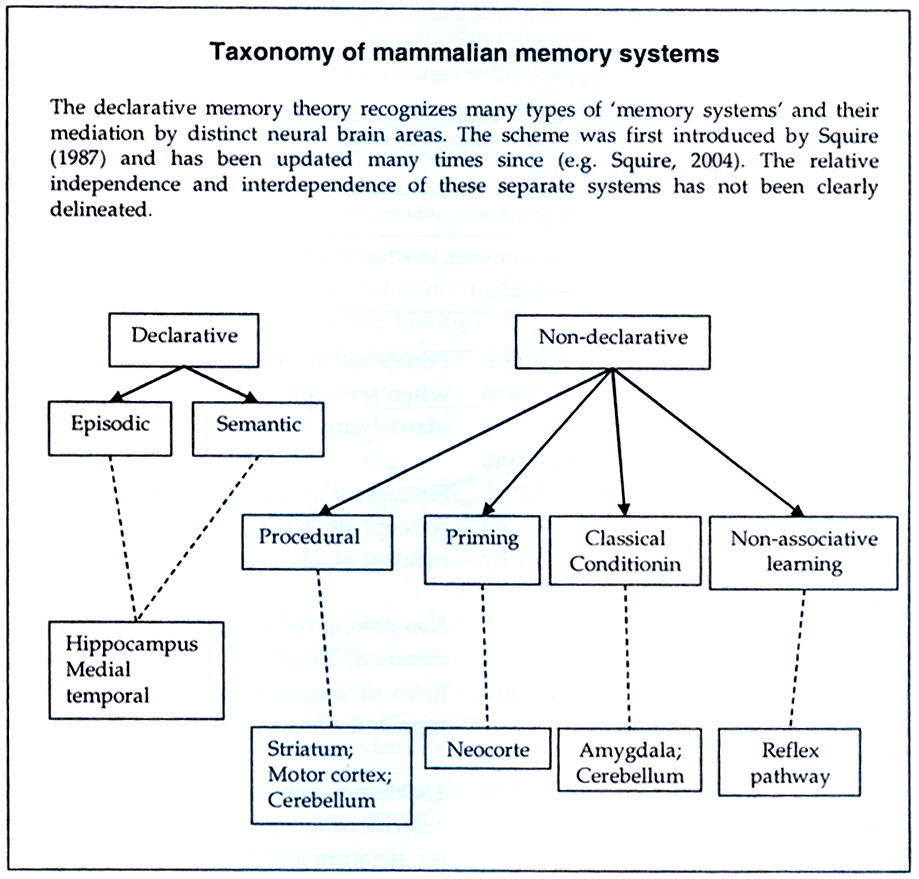
Explicit or declarative memory
Explicit memory denotes the conscious recollection of memory. Endel Tulving further refined this category into episodic (autobiographical) and semantic (factual) memories based on evidence of greater blood-flow in the anterior portions of frontal lobe when the subject was thinking about autobiographical information, and greater blood-flow in the posterior portions of the frontal lobe when thinking about generic information (5). Semantic memory refers to memory of facts (e.g. name the capital of a country) while episodic memory refers to memory of events in one’s personal life. Using lesion studies, the various areas of the brain which store different kinds of explicit memory have been identified. The table above is a partial list derived from the book, Principles of Neural Science by Kandel, Jessell and Schwartz (6):
Implicit or non-declarative memory
Implicit memory has to do with habits and instinct, where no complex cognitive processes are necessary. It is the memory which we use when we respond to stimuli based on pre-conditioned responses. Examples of this type include:
Motor skills: learning to associate one stimulus with other stimuli as well as with some inbuilt responses.
Perceptual and cognitive skills: an example of this is the mirror reading test where words which have been reversed in a mirror are read back (7).
Priming phenomena: here, subjects improve performance on tasks for which they have been subconsciously prepared.
| Area of brain | Contains memory of |
| Right hippocampus | Spatial orientation. |
| Left hippocampus | Verbal memory. |
| Median temporal lobe | Long-term new memory. |
| Occipital lobe | Apperceptive agnosia, where one cannot draw an object but can name it. |
| Posterior parietal cortex | Associative agnosia, where one can draw an object but cannot name it. |
| Inferotemporal cortex | Prosopagnosia, where one cannot recognize or learn faces. |
| Frontal lobe | Source amnesia, in which one cannot remember how information was acquired. |
Perceptual priming: an example of this is when seeing an incomplete sketch helps in identifying the completed sketch later.
Conceptual or semantic priming: learning the concept of ‘table’ helps in recognizing the concept of ‘chair’.
Non-associative learning (habitation and sensitization): Response to stimuli changes in the form of augmentation or waning due to repeated stimuli presentation.
The neural correlates of implicit memory have been identified as the amygdala and perhaps the striatum and the cerebellum (8).
Now we will examine the yogic view of memory as described by Sri Aurobindo.
Sri Aurobindo’s view of memory
The traditional term used for human memory in yoga is citta, although it is also used to denote the mind as a whole. This is because Yoga Psychology regards mind as all-pervasive with memory as an inherent part of the mind. The yogic model of memory is based on the extended model of man, whereby the individual is not just a physical body with a brain but actually five sheaths of varying density of consciousness.
Sri Aurobindo in his works defined three stores of memory:
1. Conscious memory: this refers to organized memory. It is that which we can bring up at any moment we like. It is under our control.
2. Subliminal memory: it can hold all things, even those which the mind cannot understand, e.g. if you hear somebody talking Hebrew, the subliminal memory can hold that and bring it up accurately in some abnormal state, e.g. the hypnotic. Exact images are retained by the subliminal memory. All that is subliminal is described by mainstream psychology as the subconscient, which is not true because the consciousness that holds exact memories is far wider and fuller than our waking or surface consciousness, and so cannot be called subconscient. In simpler terms, one can say that the full uninterpreted video of daily events is stored into the subliminal memory.
3. Subconscient memory: is a memory of impressions, habits and impulses. It is further divided into mental, vital and physical. The mental subconscient holds repeated thought-patterns, the vital subconscient holds desires and impulses, while the physical subconscient retains the memory of involuntary responses exhibited by our body (9).
Here is a possible diagram of the mental sheath (witness self, intellect, sense-mind, memory) as per Yoga Psychology:
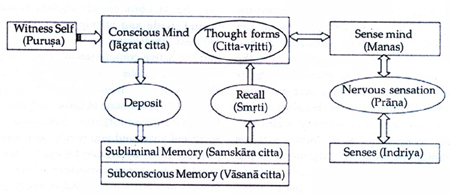
“Chitta, the basic consciousness, is largely subconscient; it has, open and hidden, two kinds of action, one passive or receptive, the other active or reactive and formative. As a passive power it receives all impacts, even those of which the mind is unaware or to which it is inattentive, and it stores them in an immense reserve of passive subconscient memory on which the mind as an active memory can draw. But ordinarily the mind draws only what it had observed and understood at the time, – more easily what it had observed well and understood carefully, less easily what it had observed carelessly or ill understood; at the same time there is a power in consciousness to send up to the active mind for use what that mind had not at all observed or attended to or even consciously experienced. This power only acts observably in abnormal conditions, when some part of the subconscious Chitta comes as it were to the surface or when the subliminal being in us appears on the threshold and for a time plays some part in the outer chamber of mentality where the direct intercourse and commerce with the external world takes place and our inner dealings with ourselves develop on the surface. This action of memory is so fundamental to the entire mental action that it is sometimes said, memory is the man. Even in the submental action of the body and life, which is full of this subconscient Chitta, though not under the control of the conscious mind, there is a vital and physical memory. The vital and physical habits are largely formed by this submental memory. For this reason they can be changed to an indefinite extent by a more powerful action of conscious mind and will, when that can be developed and can find means to communicate to the subconscient Chitta the will of the spirit for a new law of vital and physical action. Even, the whole constitution of our life and body may be described as a bundle of habits formed by the past evolution in Nature and held together by the persistent memory of this secret consciousness. For Chitta, the primary stuff of consciousness, is like Prana and body universal in Nature, but is subconscient and mechanical in nature of Matter (10).”
In this passage, the Mother of the Sri Aurobindo Ashram, Mirra Alfassa, delineates the working of subliminal memory whose action is far superior to mental or conscious memory.
”Outside the mental memory, which is something defective, there are states of consciousness. Each state of consciousness in which one happens to be registers the phenomena of that moment, whatever they may be. If your consciousness remains limpid, wide and strong, you can at any moment whatsoever, by concentrating, call into the active consciousness what you did, thought, saw, observed at any time before; all this you can remember by bringing up in yourself the same state of consciousness. And that, that is never forgotten. You could live a thousand years and you would remember it. Consequently, if you don’t want to forget, it must be your consciousness which remembers and not your mental memory. Your mental memory will perforce be wiped out, get blurred, and new things will take the place of the old ones. But things of which you are conscious you do not forget. You have only to bring up the same state of consciousness again (11).”
Other yogic models
Has anyone else in the field of Yoga Psychology subdivided the memory (citta) in the same way as has Sri Aurobindo? I came across a couple of references; possibly there are more.
K. Ramakrishna Rao defined three types of impressions (saṁskāras) which are stored in the memory (citta):
• Cognition and knowledge (jñānaja): memory created by fluctuations of the mind (citta-vṛitti).
• Emotional (kleṣaja): memory of emotions and instincts.
• Volition and action (karmaja): memory due to volitional activity (12).
The second type (emotional) here resembles Sri Aurobindo’s subconscious memory while the first may be related to Sri Aurobindo’s subliminal memory. The third type is a mystery due to lack of further information.
Sivaya Subramuniyaswami of the Saivite school defines five types of mind:
• Conscious mind or jāgrat citta: ordinary waking mind.
• Impression mind or saṁskāra citta: storehouse of all sensory impressions.
• Habit mind or vāsanā citta: storehouse of habits and impulses.
• Superconscious mind or kāraṇa citta: mind of light, all-knowing intelligence.
• Sub-superconscious mind or anukaraṇa citta: superconscious mind working through conscious states which brings forth intuition (13).
Ignoring the last two terms above for now, we can see that the first three terms actually parallel Sri Aurobindo’s taxonomy of memory: conscious mind corresponds to conscious memory, impression mind corresponds to subliminal memory and habit mind corresponds to subconscious memory.
Towards a possible correspondence
Neuroscience has identified various types of memory based on empirical research. Working memory seems to match the characteristics of conscious memory (active citta) defined by Sri Aurobindo. The more theory-specific construct known as short-term memory has been ignored for now. Implicit neurological memory clearly works with the same instinct as subconscious memory although some examples (conceptual priming) seem to require greater cognitive activity and might fall into the category of subliminal memory. Most of the descriptions of explicit memory, like autobiographical and semantic, fall under conscious memory as these are recorded by our senses with attention at some point of time. Neurology does not have a model to study the subliminal in detail, hence does not have corresponding terminologies. It may so occur that the contents of subliminal memory stay on the subtle electromagnetic field of neurons as patterns instead of depending on specific areas of the physical brain. In general, detailed neurological experiments may turn up phenomenological classifications which might not always correspond to memory constructs in Yoga Psychology.
A rough correspondence seems to be as follows:
| Neuroscience | Yoga |
| Sensory memory | Sense-mind or manas |
| Working memory | Conscious memory or jāgrat citta |
| Long-term implicit memory | Subconscious memory or vāsanā citta |
| Long-term explicit memory | Conscious memory |
References
1. Tulving, E., Craik, F.I.M. The Oxford Handbook of Memory. Oxford; Oxford University Press, 2000, pp. 77-93, 465-501
2. “Sensory Memory” accessed Nov 09 2010, http://www.en.wikipedia.org/wiki/Sensory_memory.
3. Kandel, E.R., Schwartz, J.H., Jessel, T.M., Editors. Principles of Neural Science (4th ed.), Oxford, UK; Appleton & Lange, 1991, pp. 1227-45.
4. O’Keefe, J., Andersen, P., Morris, R., Amaral, D., Bliss, T., Editors. The Hippocampus Book. Oxford, UK; Oxford University Press, 2007, p. 592.
5. Neath, I., Surprenant, A.M. Human Memory (2nd ed.). Belmont, CA; Wadsworth, 2003, p. 171.
6. Op. cit. Principles of Neural Science (4th ed.). Oxford, UK; Appleton & Lange, 1991, pp. 1227-45.
7. Eichenbaum, H., Cohen, N.J. From conditioning to conscious recollection: memory systems of the brain. New York; Oxford University Press, 2001, p.149.
8. Op. Cit. Principles of Neural Science (4th ed.), Oxford, UK; Appleton & Lange, 1991, pp.1227-45
9. Based on Sri Aurobindo’s Letters on Yoga, SABCL, Volume 22. Pondicherry; Sri Aurobindo Ashram Trust, 1970, pp. 362-3.
10. Sri Aurobindo. Synthesis of Yoga, SABCL, Volume 21. Pondicherry; Sri Aurobindo Ashram Trust, 1970, p. 620-1.
11. The Mother. Collected Works of the Mother, Volume 6. Pondicherry; Sri Aurobindo Ashram Trust, 1979, pp. 20-1.
12. Ramakrishna Rao, K. Consciousness Studies: cross-cultural perspectives. Jefferson, NC and London; McFarland & Company, Inc., 2002, p. 204.
13. Sivaya Subramuniyaswami. Living with Siva Pocketbook. Himalayan Academy Publications, 2001, p. 472.
Sandeep Joshi is a computer engineer currently living in the India. He writes an Integral Yoga blog at http://www.auromere.wordpress.com
Share with us (Comments, contributions, opinions)
When reproducing this feature, please credit NAMAH, and give the byline. Please send us cuttings.
